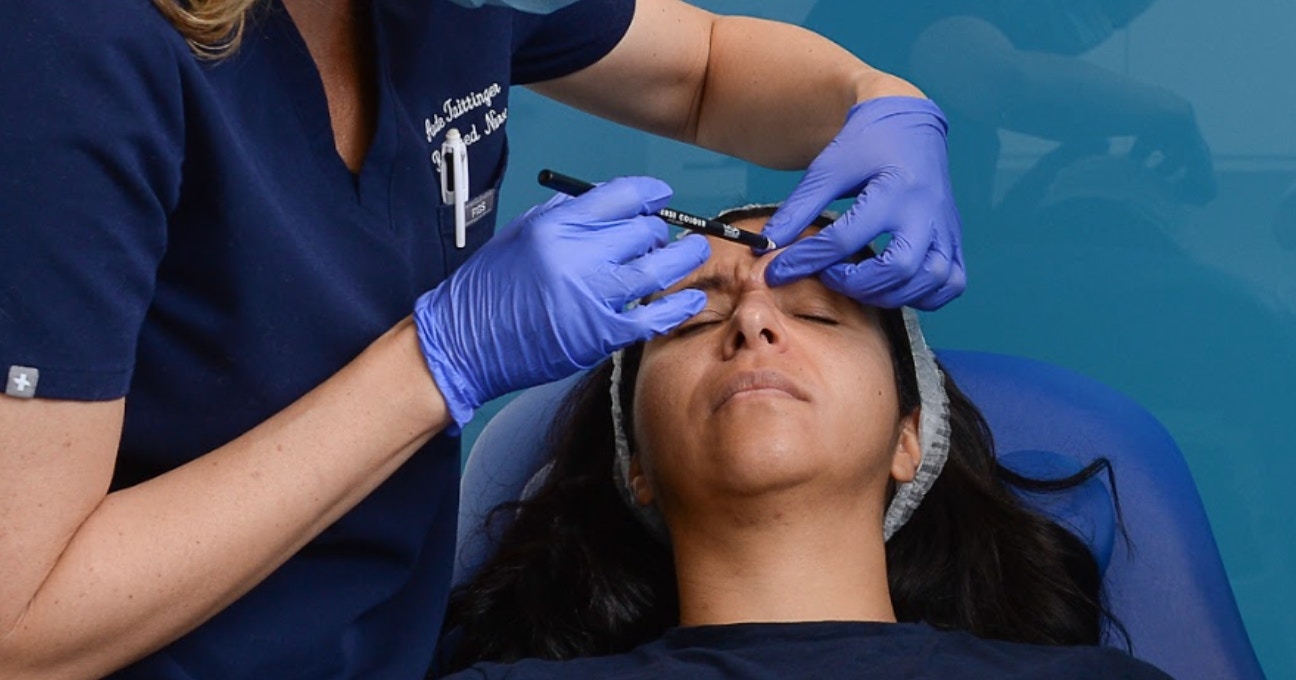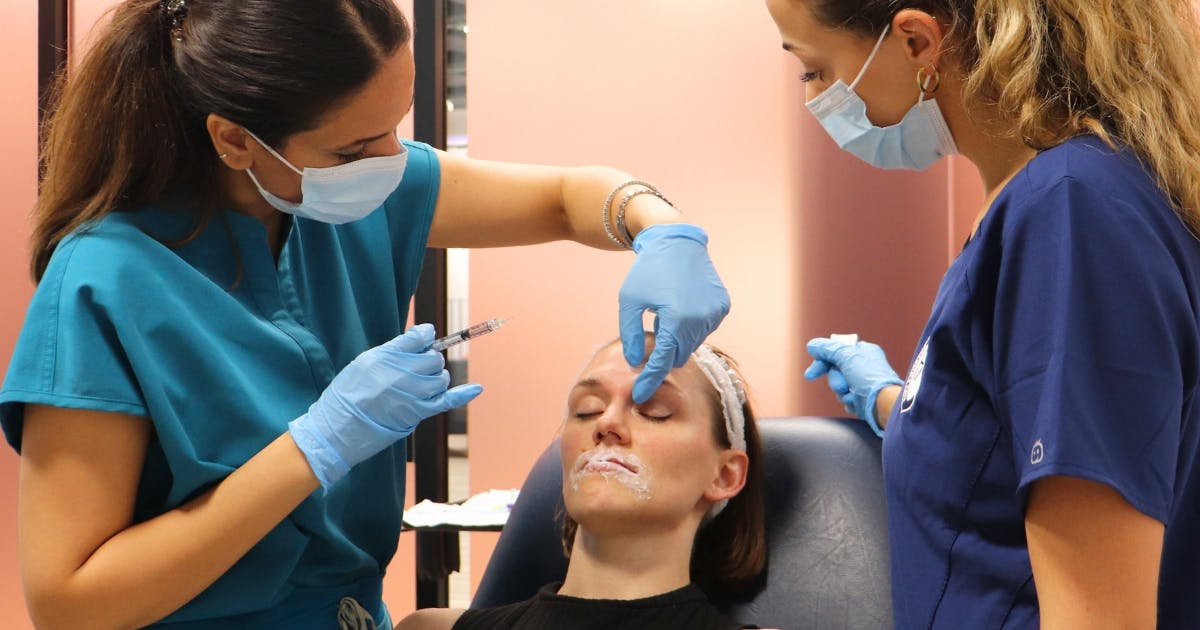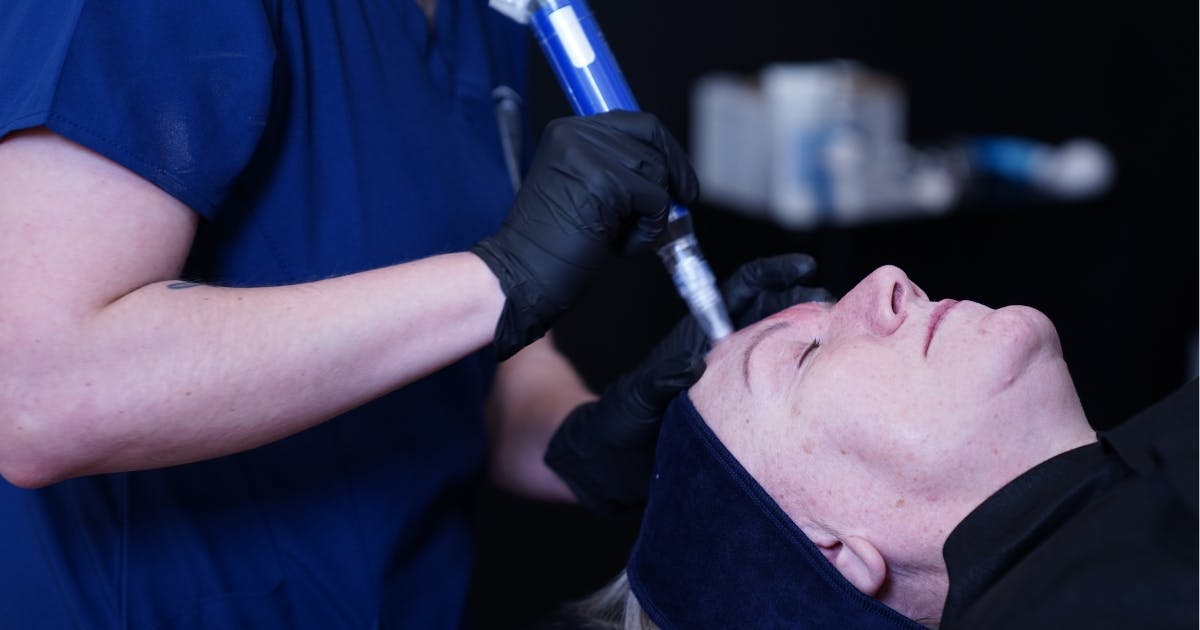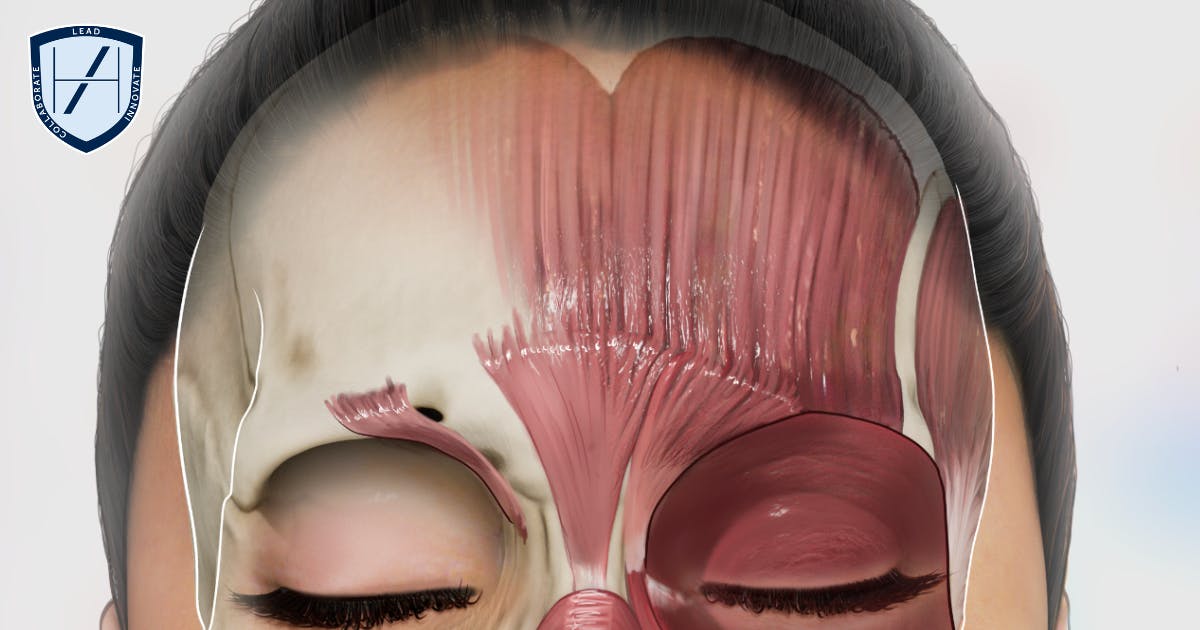Aesthetics Treatments to Stop Patients Looking Angry

Do you know which facial aesthetics treatments can stop patients looking angry? It’s a common concern among patients with undesirable resting expressions.
Faces communicate. There’s a focus on regional aspects, such as lips or cheeks, when learning about aesthetic treatments. However, the true beauty and art of aesthetics is understanding how a face conveys the essence of the person. This includes their emotional state.
So, when a patient presents saying they ‘feel like they look angry’ and are not, they’re not asking for a specific facial change. It’s about understanding what their physical facial presence means emotionally.
Dr Janine Rothburn, clinical trainer and aesthetics specialist, has a wealth of knowledge in botox and filler treatments.
Here she explores the different treatment options that can counteract an ‘angry’ appearance. She also highlights which may exacerbate the issue…

Consulting patients concerned they “always look angry”
The expression of anger often arises from the appearance of the eye region.
“If a patient comes into clinic saying they always look angry, I tend to look at their glabellar complex,” Dr Janine notes.
“This is a group of depressor muscles consisting of the procerus, corrugator supercilia and depressor supercilia. When these muscles contract, the brow is pulled down and inwards, creating an ‘angry look’.
“Injecting toxin into the glabellar complex will temporarily reduce the activity of the muscles that cause frown lines on the face.”
This approach of using botulinum toxin to relax the muscles, is generally the most common way to treat concerns about looking angry.

Using botox to treat naturally angry-looking faces
Marking up for glabellar complex toxin injections
Dr Janine advises that this treatment “usually consists of five injection points. These are the procerus and the medial and lateral heads of the corrugators on each side.”
“The best way to mark up for the glabellar complex is to first remove any make-up, followed by cleaning the skin. My product of choice is Clinisept, which is an antimicrobial solution.
“I then ask the patient to frown so we can see the bulk of the muscles to inject. Next, I mark up the injection points with a marker or white pencil.
Needle choice for deep and superficial glabellar injections
“The procerus and medial corrugators are deep injections, and the lateral corrugators are
superficial injections.”
“My preferred needle is the TSK Invisible Needle,” she adds. “These are comfortable for patients and really enhance the patient experience.”

Forehead filler to treat the frown is an advanced skill
Glabella botox is something properly-trained novice aesthetics practitioners should be able to execute safely, competently and confidently. It’s an effective treatment and one that is relatively straightforward to administer.
You’ll find this cornerstone injectable treatment is one many people start their practice with. It’s something you learn in Foundation and Core Training botox and filler courses.
Frontal forehead filler and glabella filler are technically possible for addressing deep lines and an angry appearance. These are unsuitable techniques for inexperienced injectors, though. Many experienced injectors choose not to administer these treatments due to the risks. Of particular concern is the likelihood of vascular events in the ophthalmic circulation.
Dr Janine confirms, “Dermal fillers can be injected into the frown area and the forehead to soften these lines. However, dermal fillers to the frown and forehead are extremely high risk. Only treat these areas when you are a very advanced injector, accept this risk with the patient and are confident in managing filler complications!”
“If, as a highly advanced aesthetics practitioner, you’re using filler in the frown/glabella area, a soft hyaluronic acid-based product should be used. I would use a needle, ensuring you are superficial to avoid injecting near the supra trochlear artery.”
Consider the lower face too
The descent of tissue and appearance of lines, especially around the mouth and marionette regions, can also contribute to an angry appearance. For example, there’s a downturn at the corners of the mouth which can potentially be addressed with toxin and filler. Fuller lips may also help contribute to a more relaxed appearance.

Combined treatment plans to help stop patients looking angry
Cosmetic dermatology treatments are also useful for reducing frown lines. These can be combined with glabella toxin plans or used as standalone options.
Having an understanding of both skin treatments and cosmetic injectables means you can offer patients individualised treatment plans.
Completing skin, botox and filler courses such as our Combined Level 7 Diploma allows you to provide your patients with informed, holistic care. It also widens your potential patient base by opening you up to those who don’t wish to consider injectables.
Dr Janine recommends the following skin treatments to reduce the appearance of lines which may make your patient feel that they look angry…
Try microneedling
“Microneedling stimulates your body to create new, healthier, firmer skin,” notes Dr Janine. “This, in turn, can reduce the appearance of wrinkles.
“Microneedling can be considered for patients who are worried they look angry even when they aren’t. It can help stimulate collagen, resulting in firmer and smoother skin which, in turn, can reduce the appearance of wrinkles.”
Fractional laser resurfacing
“Fractional laser resurfacing is another treatment that can reduce the appearance of frown
lines. Lasers stimulate the production of new collagen and elastin fibres in the deep layers of
the skin, reducing the appearance of wrinkles.”

Treatments to avoid if a patient presents with ‘resting angry face’
“For a patient concerned about looking angry, I would avoid treating the frontalis with toxin,” Dr Janine cautions.
"The glabella complex and frontalis can be treated together if need be, but the frontalis
should never be treated alone. This is because the frontalis is an elevator. So, by
paralysing it with toxins, there’s a risk of dropping the brow. In turn, this could make the patient look even more ‘angry’.”
Further reading
We hope you’ve found this interview useful in supplementing your aesthetics education journey! If you’d like to explore this topic further, we recommend reading our article, Understanding Glabellar Line Treatment.
There, Dr Kalpna Pindolia, our Director of Clinical Education, outlines everything you need to know about treating this area. You’ll also find further details on the botox courses we offer to doctors, dentists, nurses and clinical pharmacists.
Additionally, you can also use the search bar in our Aesthetic Medicine Articles homepage to find exactly what you’re looking for!
All information correct at the time of publication
Download our full prospectus
Browse all our injectables, dermal fillers and cosmetic dermatology courses in one document
By submitting this form, you agree to receive marketing about our products, events, promotions and exclusive content. Consent is not a condition of purchase, and no purchase is necessary. Message frequency varies. View our Privacy Policy and Terms & Conditions
Attend our FREE open evening
If you're not sure which course is right for you, let us help
Join us online or in-person at our free open evening to learn more
Our Partners














STAY INFORMED
Sign up to receive industry news, careers advice, special offers and information on Harley Academy courses and services

